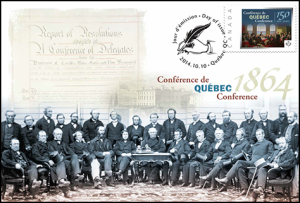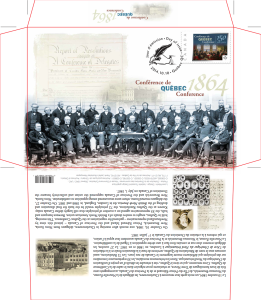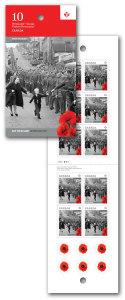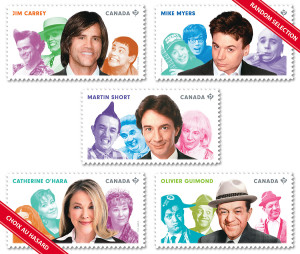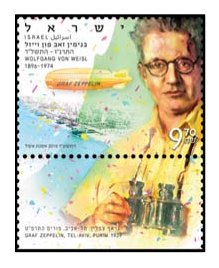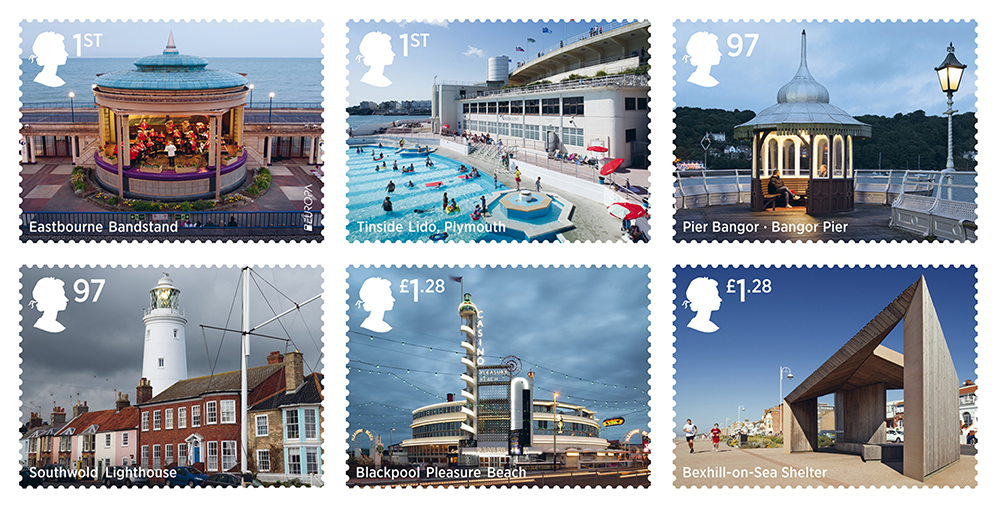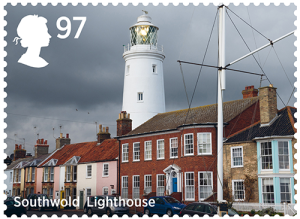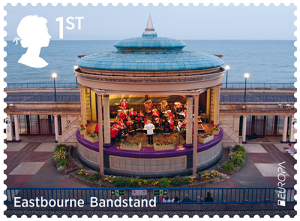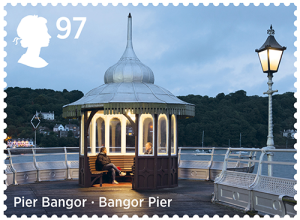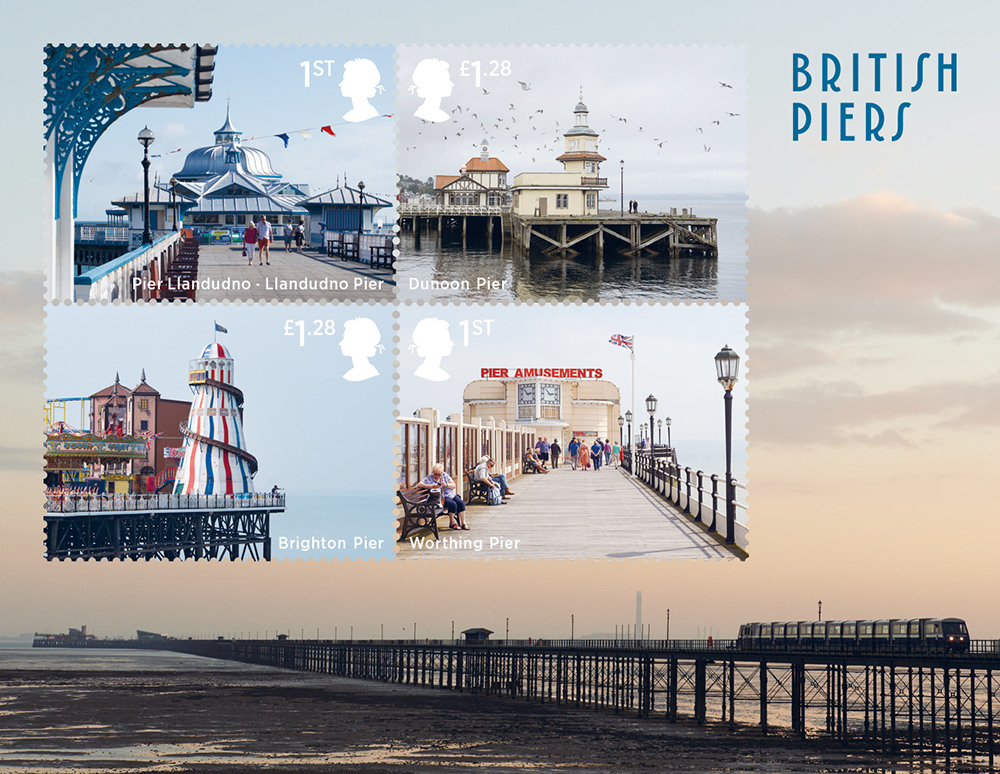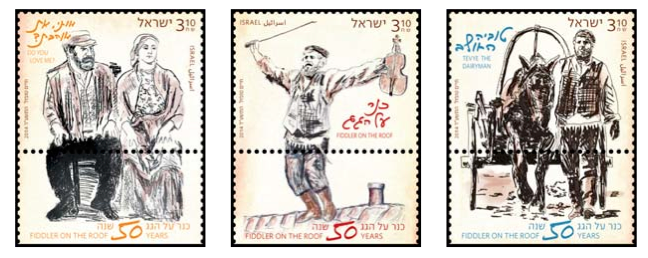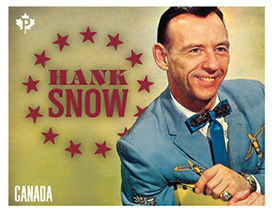[Canada Post press release]
New stamp collection celebrates Canada’s hockey passion – Six hockey legends, seven Canadian NHL teams featured in 2014 issue
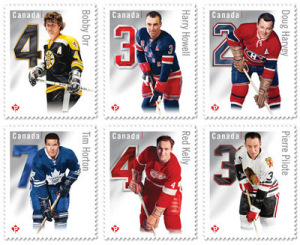 With the puck about to drop for the 2014-15 NHL® season, Canada Post delivered today a quintessentially Canadian line-up that reflects the country’s deep passion for hockey. In a special ceremony at the Hockey Hall of Fame, it unveiled a collection of stamps that honour legendary Original Six™ Defencemen, Canada’s seven NHL teams and the iconic Zamboni® Ice Resurfacer.
With the puck about to drop for the 2014-15 NHL® season, Canada Post delivered today a quintessentially Canadian line-up that reflects the country’s deep passion for hockey. In a special ceremony at the Hockey Hall of Fame, it unveiled a collection of stamps that honour legendary Original Six™ Defencemen, Canada’s seven NHL teams and the iconic Zamboni® Ice Resurfacer.
The 2014 Original Six Defencemen series highlights a star from each team in the era that ended with NHL expansion in 1967. The seven-stamp Canadian team issue features team colours and logo displayed on a miniature version of the Zamboni ice-resurfacing machine that revolutionized hockey ice maintenance, contributing to a faster game. These stamps come in coils of 50 to allow fans to support their teams.
In the new Original Six issue, the incomparable Bobby Orr of the Boston Bruins® leads a stellar lineup that also includes: Tim Horton (Toronto Maple Leafs®), Pierre Pilote (Chicago Blackhawks®), Red Kelly (Detroit Red Wings®), Doug Harvey (Montreal Canadiens®), and Harry Howell (New York Rangers®). All players, except Horton, a three-time member of the NHL’s First All-Star Team, won the Norris trophy for best defenceman. Horton finished second twice over his brilliant 23-year NHL career, once to Orr.
“The six hockey legends celebrated by Canada Post defined, and in some cases redefined, the defensive position at a golden time in the sport’s history,” says the Honourable Lisa Raitt, Minister of Transport and responsible for Canada Post. “Hockey transcends sport in Canada. It’s part of our very fabric.”
“Hockey is Canada’s passion,” says Canada Post President and CEO Deepak Chopra. “The legendary players we’ve immortalized on these stamps capture part of this country’s hockey story. These men inspired a generation, and their brilliance filled a nation with pride and joy. More than a few NHL players were born of the dreams instilled in them as boys by these stars.”
Minister Raitt and Mr. Chopra joined the four living hockey legends in the Esso Great Hall, home of the Stanley Cup, to unveil the stamps. Jeri Horton Joyce, Tim Horton’s daughter, and Doug and Glen Harvey, Doug Harvey’s sons, represented their fathers at the event.
Designed by Avi Dunkelman and Joe Gault for Mix Design Group of Toronto, each stamp features an image of the player in uniform, their enlarged jersey numbers in the background:
Bobby Orr: Boston Bruins, Number 4. Born in Parry Sound, Ontario, Orr became the first and only defenceman in league history to twice win the Art Ross Trophy for scoring. Orr led the Bruins to victory in the Stanley Cup final in 1970, scoring the winning goal in overtime and earning the Conn Smythe Trophy as most valuable playoff player. Orr’s Bruins won the Stanley Cup again in 1972. Orr also won the Calder Trophy as best rookie in 1966-67, three consecutive Hart Trophies as the league’s most valuable player (MVP), and was named to the NHL First All-Star Team eight consecutive times from 1968 to 1975. He was inducted into the Hockey Hall of Fame in 1979 at age 31.
Tim Horton: Toronto Maple Leafs, Number 7. Horton hailed from Cochrane, Ontario. Though he never won the Norris Trophy as the NHL’s best defenceman, his achievements rival those who did. He helped carry the Leafs to four Stanley Cup victories and was a three-time NHL First Team All-Star. He was inducted into the Hockey Hall of Fame in 1977.
Pierre Pilote: Chicago Blackhawks, Number 3. Born in Kénogami, Quebec, and raised in Fort Erie, Ontario, Pilote won the Norris Trophy three times from 1963 to 1965. He was instrumental to the Blackhawks’ 1961 Stanley Cup win and earned places on the NHL’s All-Star teams for seven consecutive years from 1960 to 1967. He was inducted into the Hockey Hall of Fame in 1975.
Red Kelly: Detroit Red Wings, Number 4. Hailing from Simcoe, Ontario, Kelly won the first Norris Trophy awarded in 1954. He won eight Stanley Cups, four as a defenceman with the Detroit Red Wings and four with the Toronto Maple Leafs as a centreman. He also won the Lady Byng Trophy as the NHL’s most gentlemanly player four times and was a six-time First Team All-Star. He was inducted into the Hockey Hall of Fame in 1969.
Doug Harvey: Montreal Canadiens, Number 2. Harvey was born in Montréal, Quebec, and played for the Montreal Canadiens, New York Rangers, St. Louis Blues® and Detroit Red Wings. He was an 11-time All-Star who earned the Norris Trophy seven times and gained an immortal place in the history of the Canadiens for the role he played in the Habs’ record-setting five straight Cup wins from 1956 to 1960. He was inducted into the Hockey Hall of Fame in 1973.
Harry Howell: New York Rangers, Number 3. Born in Hamilton, Ontario, Howell played 25 professional hockey seasons from 1951 to 1976. He won the Norris Trophy in 1966-67, the last season of the Original Six and was a First Team All-Star in 1967. He played for the Oakland Seals and Los Angeles Kings® before moving to the WHA in 1973 to play for the San Diego, New Jersey and Calgary franchises. He retired from hockey in 1976 and was inducted into the Hockey Hall of Fame in 1979.
The Canadian team logo stamps feature an aerial view of a Zamboni Ice Resurfacer decked out in team colours with logo displayed on the ice machine’s roof. It builds on the NHL Team Jerseys Stamps released in 2013. The seven Canadian teams are: Vancouver Canucks®, Calgary Flames®, Edmonton Oilers®, Winnipeg Jets®, Ottawa Senators®, Toronto Maple Leafs and Montreal Canadiens.
Canada Post has produced more than 50 NHL-themed stamps since 1992. The first hockey-themed stamp was issued on January 23, 1956 and featured three players wearing “Canada” jerseys.
The Original Six Defencemen stamp series, an Official First Day Cover, and the seven Canadian team logo stamps are available at Canada Post retail outlets and online at canadapost.ca/NHL.
About the Original Six Defencemen Stamps
Available in a mixed booklet of six, one stamp for each player, the stamps measure 40 mm x 32 mm with simulated perforations, printed by Lowe-Martin using seven-colour lithography on Tullis Russell paper. Six single stamp international rate souvenir sheets are available in a single foil pack that includes a chance to win: one pack in 50 has a signed and authenticated souvenir sheet. Related products: framed prints feature a more current defenceman with the Original Six player: Toronto features Borje Salming, Montreal Larry Robinson, New York Brian Leetch, Chicago Chris Chelios, and Detroit Nicklas Lidstrom. Bobby Orr stands alone for Boston. The Official First Day Covers will be cancelled in the birthplaces of each player: Parry Sound, ON (Orr); Cochrane, ON (Horton); Kénogami, QC (Pilote); Simcoe, ON (Kelly); Montréal, QC (Harvey); and Hamilton, ON (Howell).
About the Canadian Team Logo/Zamboni Ice Resurfacer Stamps
The stamps measure 24 mm x 20 mm with simulated perforations, printed by Lowe-Martin on Tullis Russell paper using six-colour lithography. They are self-adhesive and the Official First Day Covers will be cancelled in Brantford, ON, Canadian headquarters of Frank J. Zamboni & Co., Inc.. There’s an OFDC souvenir sheet, postcards of Zamboni Ice Resurfacer Canadian team coil stamps and seven coil dispensers shaped like Zamboni Ice Resurfacers. The stamps are available in individual coils of 50.

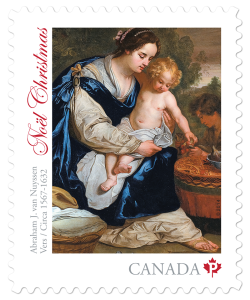 “In each of the three figures, the kindness and generosity of Santa emerges,” says stamp designer Hélène L’Heureux. “Whether he’s answering letters, handing out gifts, or simply expressing peace and serenity, Santa is endearing, merry and timeless.”
“In each of the three figures, the kindness and generosity of Santa emerges,” says stamp designer Hélène L’Heureux. “Whether he’s answering letters, handing out gifts, or simply expressing peace and serenity, Santa is endearing, merry and timeless.” The festive issue helps Canadians add a special touch to their holiday mailings. Many customers also use custom photo stamps to express themselves during the holidays and for other special occasions. Customers can use the Canada Post Picture Postage™ service at any time to create unique, cheerful and memorable stamps for their family, friends and clients. Picture Postage is available at picturepostage.ca and on Canada Post’s free mobile app.
The festive issue helps Canadians add a special touch to their holiday mailings. Many customers also use custom photo stamps to express themselves during the holidays and for other special occasions. Customers can use the Canada Post Picture Postage™ service at any time to create unique, cheerful and memorable stamps for their family, friends and clients. Picture Postage is available at picturepostage.ca and on Canada Post’s free mobile app.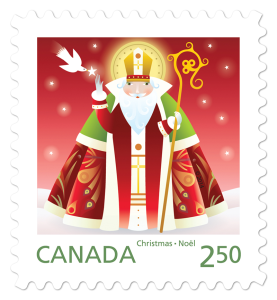 booklets of 12 stamps and the U.S. and international stamps each in booklets of six. A souvenir sheet of all three stamps is also available; these stamps have simulated perforations and use PVA gum. The Official First Day Cover was cancelled in Saint-Nicolas, QC.
booklets of 12 stamps and the U.S. and international stamps each in booklets of six. A souvenir sheet of all three stamps is also available; these stamps have simulated perforations and use PVA gum. The Official First Day Cover was cancelled in Saint-Nicolas, QC.
